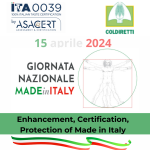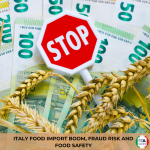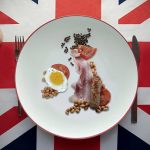The surge of contagions, due to the rapid spread of the Omicron variant, has definitely marked the festivities of Italians, forcing them to say goodbye to concerts in the squares, travels and clubs, to embrace the only certainty of this Christmas: the table full of the best dishes that the culinary tradition of each country gives us at Christmas and New Year’s eve.
For example, in Russia to celebrate the New Year they prepare Olivier salad (equivalent of our Russian salad); Haleem is a stew that is consumed in the Middle East and Central Asia; in Korea they eat red bean porridge to drive away bad luck and evil spirits; one of the traditional Christmas sweets of Great Britain are mince pies (a kind of small tarts with high edges); the Lunar New Year in Vietnam is celebrated by preparing banana cake. Between meat, fish, cotechino, lentils, zamponi, nougat, dried fruit, cheese and cold cuts, panettone and pandoro, Italians consumed between 15.000 and 20.000 kilocalories.
According to the data provided by Coldiretti, if on the one hand the forced stop has led Italians to dive on food – with weight gains of up to two kilos – on the other hand there are about 400 million leftovers left on the tables. In particular, fish, dairy products, fresh sweets, but also fruit and vegetables which, impossible to be preserved, ended up directly in the trash. This is due to a tendency still strong in Italy to buy more than necessary, especially at parties, when you prefer to exaggerate in purchases rather than rely on the real consumption of tablemates.
But the issue of waste and our complicated relationship with food is not exclusive to the Christmas period.
For our ancestors, food was survival and – often – hard work. When in 1789, Parisians poured onto the streets of the capital to demand bread, they weren’t speaking in metaphors: they were reclaiming their staple food. Today, on the other hand, we eat as few once did. Never before has food played such an essential role in our lives. Closed within the walls of our homes, where the possibilities of “doing something” are scarce, opening the refrigerator is one of the few options left. We have made eating one of the central moments of our lives, creating a significant difference between eating for hunger, that is to feed ourselves, and eating to eat. Eating to eat means eating for self. Not for the needs dictated by our bodies, but those that our social and inner animal demands of us. Food becomes a means to bring us together, to share something, to find an identity.
In our society we have experts, connoisseurs, teachers, cooks, critics: people who do not eat because their stomachs grumble, but because cooking is their natural microcosm, a reason for living, an art. To return to the cultivation methods of our agricultural tradition, the use of organic, ecological, natural products. Re-evaluate the agri-culture matrix of healthy and genuine products, qualities that the Italian gastronomic tradition enjoys.
ITA0039 supports and protects the Italian food chain, symbol of a healthy and quality nutritional path. All of us are conditioned to buy what costs less, the cheap imitation of a more expensive product, thinking we are not making a difference. Yet, this model of spending, the consequence of a push that has lasted for decades to put low prices before everything else and to consider workers and the environment as expendable elements in virtue of profit, is no longer sustainable.
If it is true that “we are what we eat”, ITA0039 hopes that the world will increasingly choose the taste of quality, good food and, above all, Made in Italy.






